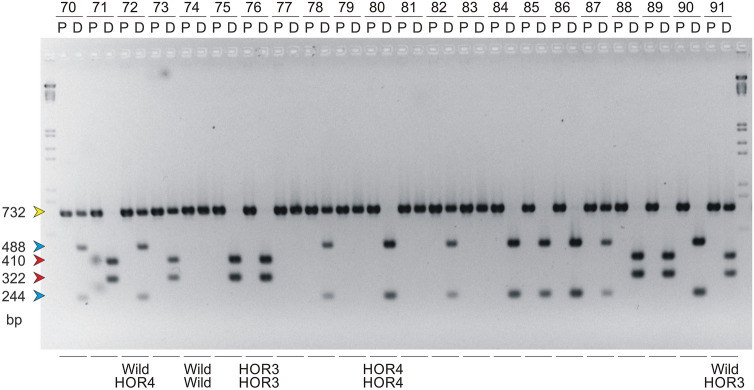Fig. 3.
An example of results obtained using CAPS marker analyses for the rapeseed breeding lines in 2014. For each analyzed plant, two samples (designated with letters P and D, which are explained in Fig. 2) representing two steps of the CAPS protocol were applied on the gel. The numbers above each pair of lanes refer to the description of the plants delivered by breeders in 2014. The arrows indicate all five characteristic DNA fragments observed on the agarose gel, and their colors correspond to the colors used for the display of each mutation shown in Fig. 1. The five most frequent band patterns (in accordance with Table 1) are designated below each pair of lanes with the names of the specific alleles of the BnaA.FAD2 gene that are present in the studied plant (these are “HOR3” and “HOR4” for the mutated alleles and “Wild” for the wild-type alleles, respectively) (color figure online)

